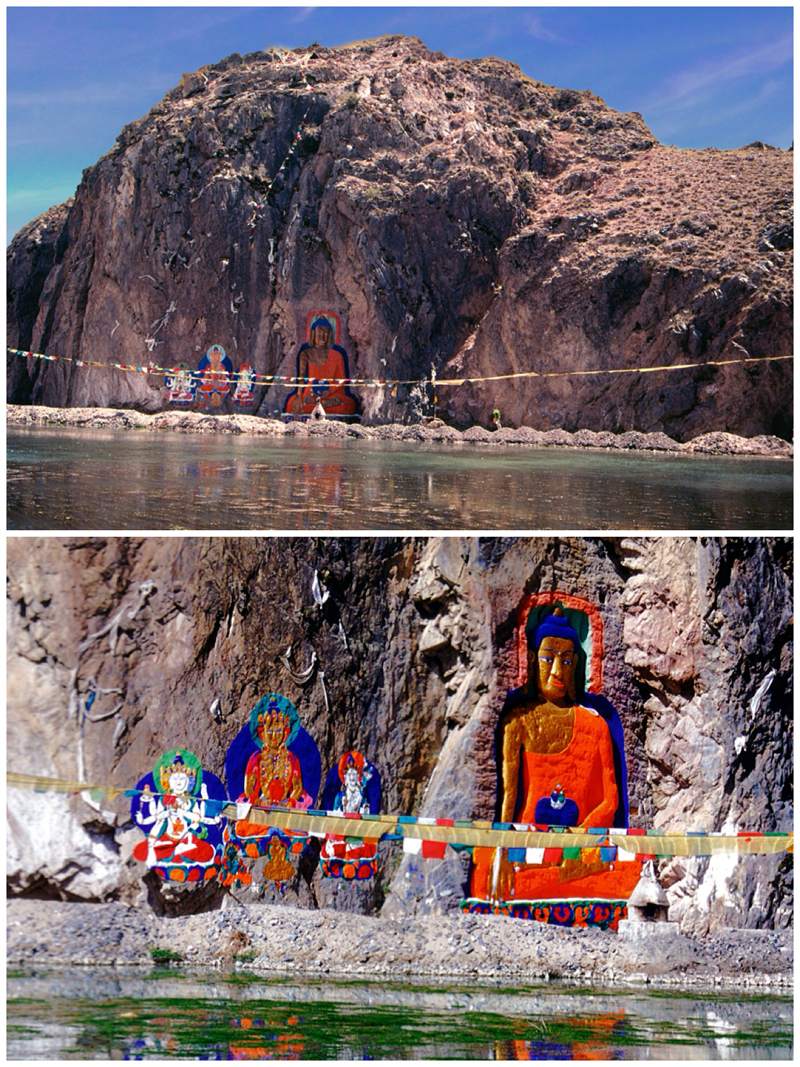Lhasa - a travel dream fulfilled
Updated: 2018-11-20 By Bruce Connolly (chinadaily.com.cn)
 Print
Print




I was fascinated at the scenes all around. Groups of monks walking past crowds of people thronging the forecourt and entrance to the Jokhang, some prostrating themselves on paving stones worn smooth over many years. Going inside it was like stepping back in time as I was led by a young monk through halls and narrow corridors lit by flickering butter lamps. The air heady with aroma of incense. Within a holy sanctum sat the historic statue of Sakyamuni, brought from Chang’an (Xi'an) over 1,300 years previously by Princess Wen Cheng. There was so much, indeed almost too much to take in before I was guided up onto the roof. It was adorned with many golden symbols including the "Wheel of Dharma" that recalled the Buddha's first sermon in a deer park. The view toward the Potala, stunning, it was a perfect location to be photographed alongside my guide. Moments that I have always cherished.
Back outside I walked clockwise along part of the Barkhor Circuit where many stalls offered traditional clothes, hats, butter lanterns, decorative thangkas depicting the Potala Palace. I returned, as was my custom, to an outdoor cafe at the square below the Potala to update my diary. Writing complete, I would simply sit there trying to take in all that had happened during such a highly memorable day. The weather, beautiful, added to the experiences.
To the west of the city sits the former Summer Palace of the Dalai Lamas. Today Nobulingka or "Jewel Park" is a public garden. The original palace was created in 1755 by the seventh Dalai Lama who decided to transform this pleasant woodland area into a summer administration base. Every year saw a great procession of palace officials moving in spring from the Potala to the Norbolingka, returning back in the autumn. Over subsequent periods there was both new building and extensions to the site. A fascinating place to explore while taking in the beauty of the forested gardens appearing popular with families coming out for picnicking or simply relaxation.
Lhasa in 2000 was not a large city and most journeys quickly took me beyond the urban areas. One, into nearby hilly terrain was to the Sera Monastery. Along with the Drepung, this was one of Lhasa's two great Gelugpa monasteries. Founded in 1419 it remains an important centre for Buddhist study. In a tree-shaded courtyard I came upon a noisy scene of many monks debating, chatting and indeed laughing. Some were fingering long strands of prayer beads while snapping their fingers or slapping their hands to emphasize points. Some stood while others sat in groups, again I was welcomed and invited to take some photographs.

Buddhist carvings and paintings near Lhasa 2000. [Photo by Bruce Connolly/chinadaily.com.cn]








